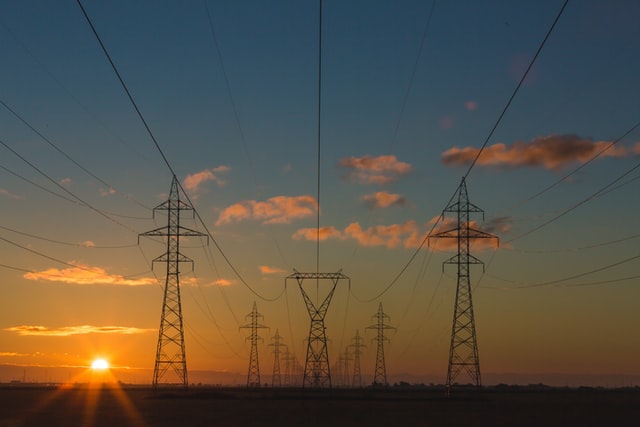Comment On National Grid Blackout Investigation
This week ending August 23, Ofgem published the initial report on the National Grid’s investigation into the blackouts that occurred on August 9. Tom Edwards...
Read Full Article
Ofgem’s Targeted Charging Review could see thousands added to the cost of business’ electricity bills.
The Targeted Charging Review (TCR) initiative aims to modernise the electricity network and transform the management of the National Grid.
Greg Armstrong, Principle Consultant at TEAM Energy, is the lead on the Targeted Charging Review for the organisation and has been working closely with key customers on their strategy for this change.

Picture: a photograph of Greg Armstrong
The changes which address the way distribution and transmission charges are allocated are expected to save consumers between £4-5bn over the period to 2040.
Despite the ambitious cost-saving forecasts, the move isn’t without controversy. The transmission charges alone could see thousands added to the cost of business’ electricity bills. Critics from the renewable energy sector argue the reforms present a major obstacle to the future of solar and wind power deployment, and undermine the business case for solar PV and batteries.
Recently Ofgem announced that the transmission charge reforms would enter consultation with a view to delay their introduction until April 2023. The changes to the distribution charges will still be introduced from April 2022.
For many, the expected delay in the transmission charges will be welcome. While industry waits for the decision, for organisations that haven’t already, it’s time to consider the impact the initiative will have. For many, without taking steps to mitigate the effects, the expectation is the developments will see their associated electricity costs increase. That’s why it is important to act now, as although, the review may be delayed, the changes are still on their way.
The reforms proposed through the targeted charging review while divisive, have becoming increasingly necessary. As the journey to net zero gains momentum, more and more businesses are looking to migrate away from heavy polluting fossil fuels and utilising technology and innovation – mostly powered by electricity – to reduce their carbon emissions. Many organisations are implementing renewable onsite generation, such as solar panels and wind turbines to support this. In recent years there has been a surge in the use of electric vehicles, all of which creates a variable change in demand on the electricity network.
To deliver an economically efficient system that keeps up with the demands of an evolving energy landscape, there needs to be investment in the network infrastructure. The reforms make savings, and create investment to develop the infrastructure that will underpin the delivery of a smart grid. A grid that harnesses clean tech and software, and supports the provision of a net zero future.
With that future in mind, these changes need to happen.
It is true though that the reforms have been criticised for their approach to decarbonisation. With claims from the renewable sector that the changes do not go far enough to support organisations in adopting renewable technology for on-site generation.
The question about the effect of removing the incentives for demand reduction has also been raised. Moving to a fixed cost charging methodology will penalise organisations with high energy consumption who have taken steps to reduce their energy demand through energy storage or onsite generation. This it is argued, will drive up costs for renewable generation and storage technologies, leading to a reduction in investment, and so a slower up take in the solutions.
There is also the impact of the probable increase in the Triads, the periods of peak demand, especially during winter, as organisations employing demand reduction tactics will no longer be incentivised to do so. Some large-scale businesses with high demand, utilise Triad avoidance solutions, such as load shifting or operating on-site generation during Triad periods, in order to mitigate high consumptions costs during these times.
While preventing Triad avoidance is one of the reasons for the TCR, the practice does help prevent surges in those periods of peak demand. With the reduction of Triad avoidance measures, there will be new spikes in demand, leading to tight electricity margins over winter when demand is high.
The most important point to note for any organisation concerned about the impact of the TCR on their operational costs, is to know that the charging methodology in large is based on their Available Supply Capacity (ASC).
Generally, organisations that have low Available Capacity and do not operate Triad avoidance may see a reduction in their distribution and transmission costs as a result of the changes. Organisations that are charged an all-inclusive rate will not see any direct change until their electricity contract renewal.
However, large organisations that are utilising Triad avoidance will be most impacted as under the new scheme they will no longer be able to reduce their costs through these measures.
If your organisation is going be affected by the upcoming changes to the network charges, you have probably been considering solutions to offset the costs, or looking at the budget to see where you can move around funds.
The simplest and most effective action to take to mitigate the impact of the charges, starting with the distribution reforms coming into April 2022, is to review your ASC and ensure it is optimised for your energy demands.
In our experience, many organisations that have supplies with an Available Capacity, may not have reviewed the level at which it is set for many years. This increases the likelihood that the capacity that they will be charged based on could be at a level that isn't appropriate or reflective of their expected demand. This can be the case where the demand has changed due to changes in their operations, such as reduced or increased infrastructure or the introduction of renewable on-site generation.
By optimising your ASC, you can ensure you are being correctly allocated distribution and transmission charges, or you may move into a lower charging band by decreasing your Available Capacity, and so reducing the cost to your organisation.
Although the first tranche of changes is being introduced by Ofgem in April 2022, it may be tempting to wait for the transmission rates to be published before taking any action. However, this will inevitably be delayed by the Transmission charge consultation, pushing back any savings you could be making from reviewing your ASC now.
Speaking to organisations affected by the TCR, we’re recommending they bring forward plans to optimise their ASC ahead of the distribution charges to start making cost savings, with a view to schedule a further review before the transmission charges are introduced.
Picture: a photograph of some electricity pylons.
Article written by Greg Armstrong | Published 08 July 2021
This week ending August 23, Ofgem published the initial report on the National Grid’s investigation into the blackouts that occurred on August 9. Tom Edwards...
Read Full ArticleOfgem has confirmed it will use the comedy of competitive tender to try to knock £100m off the £800 million cost to connect Hinkley Point C to the...
Read Full ArticleThe Textile Services Association has gained support to hold a cross-party Westminster meeting to discuss the ongoing issues facing the commercial laundry industry. ...
Read Full ArticleThe UK’s Boiler Upgrade Scheme has been branded “an embarrassment” as it has failed to meet a third of its target heat pump installations. The scheme...
Read Full ArticleData suggests that businesses that fixed their energy contracts at the peak of the energy market last year could face up to a 133 per cent rise in bills from April....
Read Full ArticleIn addition to a cabinet reshuffle, Prime Minister Rishi Sunak has created a new ministerial department to deal with the UK’s energy security. Headed up by Grant...
Read Full ArticleData is crucial when it comes to managing energy, but communicating it can come with its challenges as data means different things to different people. TEAM’s...
Read Full ArticleA new package to help UK businesses manage rising energy costs is set to replace the current Energy Bill Relief Scheme. The Treasury's new Energy Bills Discount...
Read Full ArticleLandlords, businesses and individuals around the world are joining a campaign to reduce wasted energy in commercial buildings. Metrikus, the real estate software...
Read Full Articlemeasurable.energy has released their first big batch of sockets with installations underway all across the UK. Organisations are using the machine learning-enabled...
Read Full Article